Each garden culture has its own characteristics of care, including jasmine. This shrub is also called marmoset, in addition to standard procedures, it requires regular pruning in the fall. Many who recently planted this fragrant plant on the site do not know what period and how to carry it out.
Content
- 1 Features of care and preparation for winter
- 2 Why trim jasmine
- 3 In what period is it better to trim the mock
- 4 The basic rules of autumn pruning
- 5 Care for the bush before and after pruning
- 6 Organization of shelter for the winter
- 7 Features of preparing for winter depending on the region
- 8 Common Jasmine Care Mistakes
- 9 Conclusion
Features of care and preparation for winter
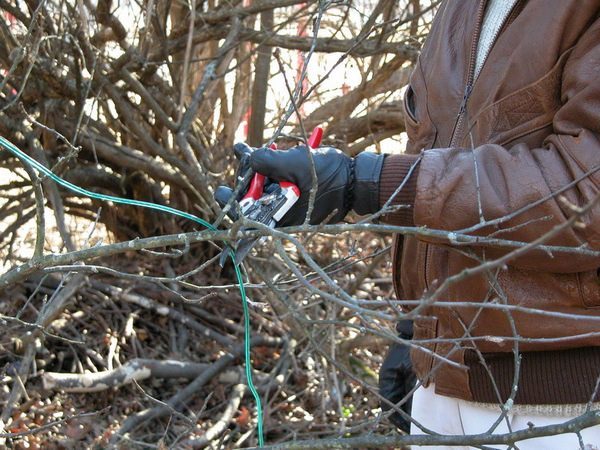
Jasmine is a perennial shrub, but for it to always delight with its beauty and delicate aroma, it needs nutritious soil. Magnificent flowering can be achieved only if it is saturated with minerals and nutrients. Also, the plant needs regular plentiful watering, and, of course, pruning. There are three types of it:
- Sanitary.
- Anti-aging.
- Formative.
Forming pruning is carried out in spring, thickening branches and shoots frozen in winter are removed. Anti-aging is carried out every 5-8 years, as the old branches will no longer give such a magnificent flowering. Sanitary is carried out in the fall.
 You may be interested in:
You may be interested in:Why trim jasmine
The procedure is carried out in order to preserve the beautiful appearance of the bushes, because sometimes the shoots grow inward and thicken the plant, many people like to give the bushes different shapes. And sometimes jasmine is used by landscape designers in composing compositions, and this beauty needs to be maintained. Old branches no longer give such a magnificent flowering, but at the same time, the plant spends a lot of energy on their growth and development. In addition, they draw a large amount of nutrients from the soil. If you do not take care of the plant, then it will look flawed.
In what period is it better to trim the mock
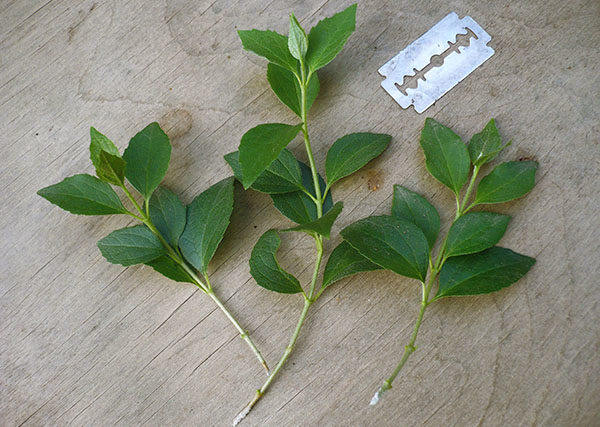
Jasmine is unpretentious, it tolerates pruning well and quickly recovers after it. The procedure can be carried out throughout the season, in the spring they cut off frozen shoots, thickening in the summer. After the end of the flowering period, not fallen buds are removed. As for sanitary and anti-aging pruning, it is most often carried out in the fall. Extra shoots are removed, as well as those that will no longer bloom so magnificent. It is believed that autumn pruning will help prepare jasmine for the cold. Also in the fall, before or after pruning, fertilizers are applied, they will help restore strength to the bush after flowering.
The basic rules of autumn pruning
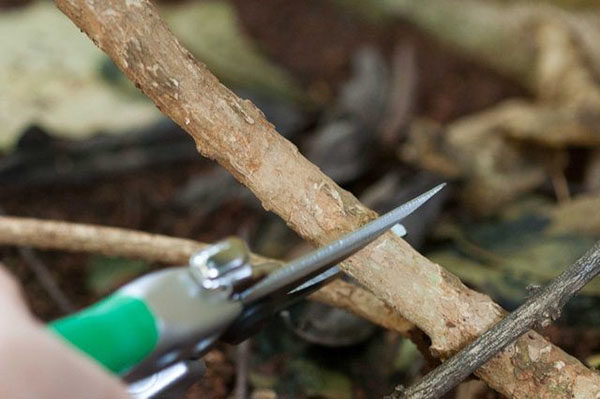 For the first time, jasmine is cut right after planting, experienced gardeners recommend leaving only 3-4 of the strongest trunks. You should not regret the young shoots, in a year it will grow twice as powerful, and jasmine will decorate the garden plot with its appearance.
For the first time, jasmine is cut right after planting, experienced gardeners recommend leaving only 3-4 of the strongest trunks. You should not regret the young shoots, in a year it will grow twice as powerful, and jasmine will decorate the garden plot with its appearance.
For pruning, you need to prepare ground, sterile garden tools. Young shoots and thin branches can be cut with a secateurs or delimbers. But they will not work to remove old and powerful branches, they use a hacksaw for them.First, with the help of a pruning shear, loose inflorescences are removed, then dry or having damage and traces of branch diseases. After thickening shoots. And at the end, you can give the bush the desired shape. The procedure is carried out very carefully, when cutting old branches it is impossible to damage the young shoots, because it is she who will give abundant flowering next year. Places of cuts are treated with garden varieties or other antiseptics, this will protect the bush from infections and pathogens.
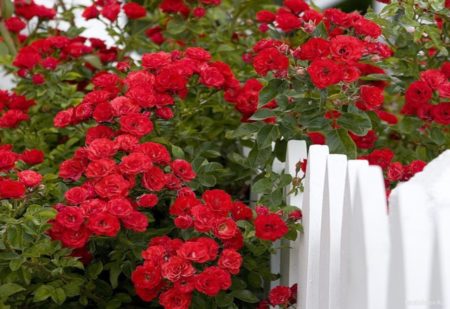 You may be interested in:
You may be interested in:Inexperienced gardeners first need to learn how to trim jasmine evenly, and after a few years you can give the bush any shape. Also, cuttings are often harvested in the fall, and in the next season they are planted. For this, young shoots are cut together with a piece of the trunk and cut into cuttings. Their length should be approximately 5 cm, and a pair of internodes and a small amount of foliage should also be located on one stalk. The cut under the internodes should be at an angle of 90 degrees, cut horizontally above the kidney. Material for planting is stored until spring in a dry room at a temperature of 0 0 Celsius.
Care for the bush before and after pruning
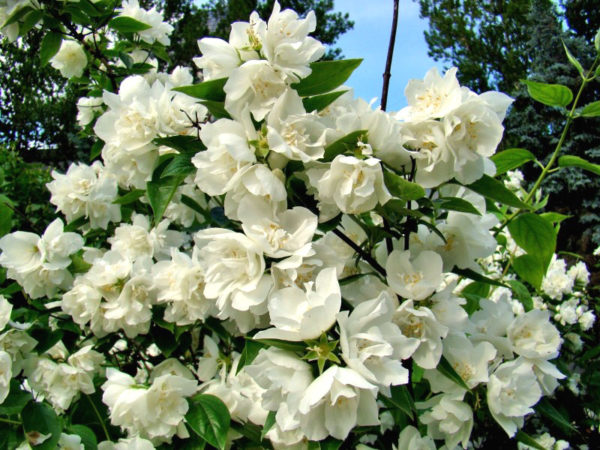
After the procedure, any plant needs careful care. Despite the fact that jasmine tolerates pruning well, it is no exception. First, you need to control the soil moisture, it should not dry out. If jasmine is watered warmly on the street once a week. During periods of drought and high air temperature, watering is carried out twice a week. In addition to the use of mineral fertilizers two, three times during the summer, mullein or rotted manure is introduced into the soil. This will provide the bush with nutrients, and in the future will increase the quantity and quality of buds.
In autumn, if it often rains, then watering is completely stopped, but if the weather is dry, then the last time before winter I water it 14 days before the first frost. Irrigation will require from 10 to 20 liters of water, the amount depends on the age of the plant. Also, mineral fertilizers are added before winter, and potassium and phosphorus are considered to be the most necessary substances for the mockup in this period.
After pruning, near the jasmine, all fallen leaves and cut branches are removed, because pathogens of infections and parasites can winter in them. After harvesting, the bush is sprayed with copper-containing preparations for prevention purposes.
Organization of shelter for the winter
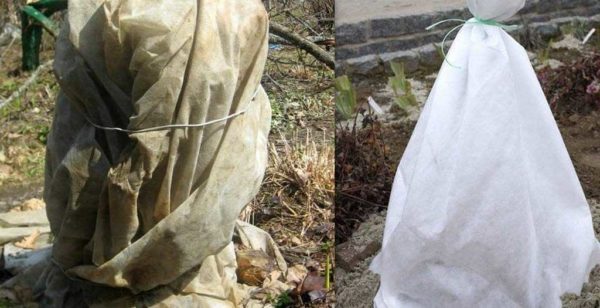
Jasmine is classified as frost-resistant plants, there are varieties that tolerate even severe frosts. In the southern regions of the country, culture does not need shelter; in the middle lane, certain varieties are covered. Young shrubs are more susceptible to freezing, so it is better to cover them in the early years.
The soil in the near-stem circle is first dug up, then mulched with a thick layer (20 cm) of rotted manure or peat. Mulch protects the roots from freezing, as they are more susceptible to cold. From above, the plant can be covered with any covering material.
Features of preparing for winter depending on the region
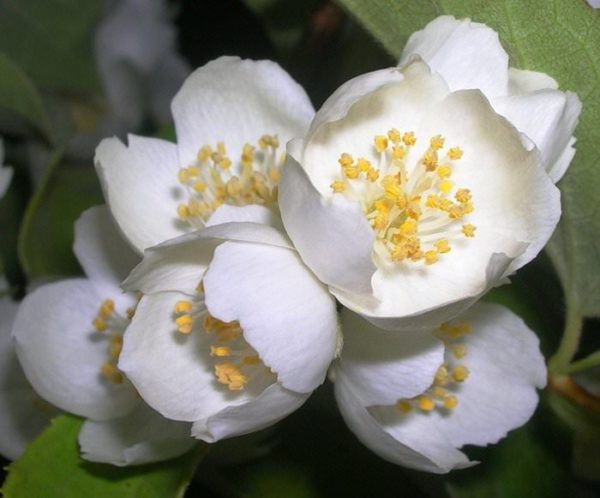
Jasmine can grow almost throughout Russia, basically caring for it is no different. As for preparing for the winter, for some areas there are special rules.
Middle lane
There are practically no peculiarities of care, but it is recommended to plant a shrub near a fence or buildings, they will protect it from cold winds in winter. The soil in the near-stem circle is mulched, if the variety is frost-resistant, the aerial part can not be covered. The agricultural technology of culture in the Volga region is no different.
Ural and Siberia
These regions are rather cold, the summer period is shorter, and winters are frosty and snowy.Jasmine in these conditions is growing and developing very well. But so that it does not freeze in winter, the trunk circle is mulched more carefully, the layer of mulch should be at least 30 centimeters. The bush itself is covered with agrofibre or any other non-woven material.
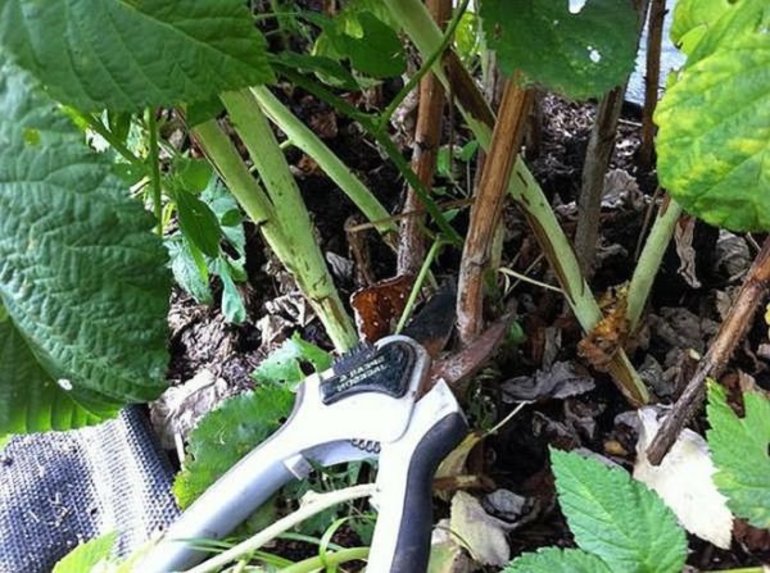 You may be interested in:
You may be interested in:Common Jasmine Care Mistakes
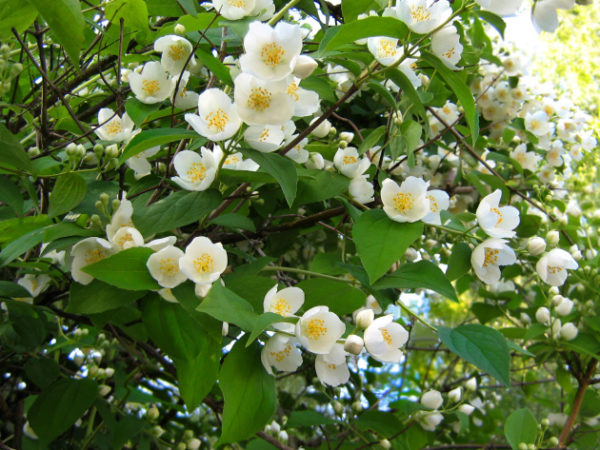
The culture does not need special growing conditions and laborious care. However, inexperienced gardeners make mistakes here, because of them the plant develops poorly, and flowering becomes very poor and dull.
- Some people forget to feed them in the fall, and they are extremely important for culture.
- Ignore agricultural technology and carry out incomplete pruning, leaving damaged and thickening branches.
- Fearing the freezing of the aerial part, they cover it too much, and when warming, the shoots begin to whine.
Conclusion
Pruning jasmine is one of the most important care procedures; if it is not done, the plant will not have a very attractive appearance, and flowering will be sparse. The main part of the extra branches is best removed in the fall, in the spring you can give the desired shape to the bush. This must be done carefully so as not to damage the remaining shoots. With all the recommendations, jasmine will delight with its beauty for many more years.




 Sow in the ground, without seedlings: 10 beautiful and unpretentious flowers
Sow in the ground, without seedlings: 10 beautiful and unpretentious flowers Platicodon planting and outdoor care
Platicodon planting and outdoor care Hosta - planting and care in the open ground in the Urals
Hosta - planting and care in the open ground in the Urals Oleander - care and growing at home
Oleander - care and growing at home